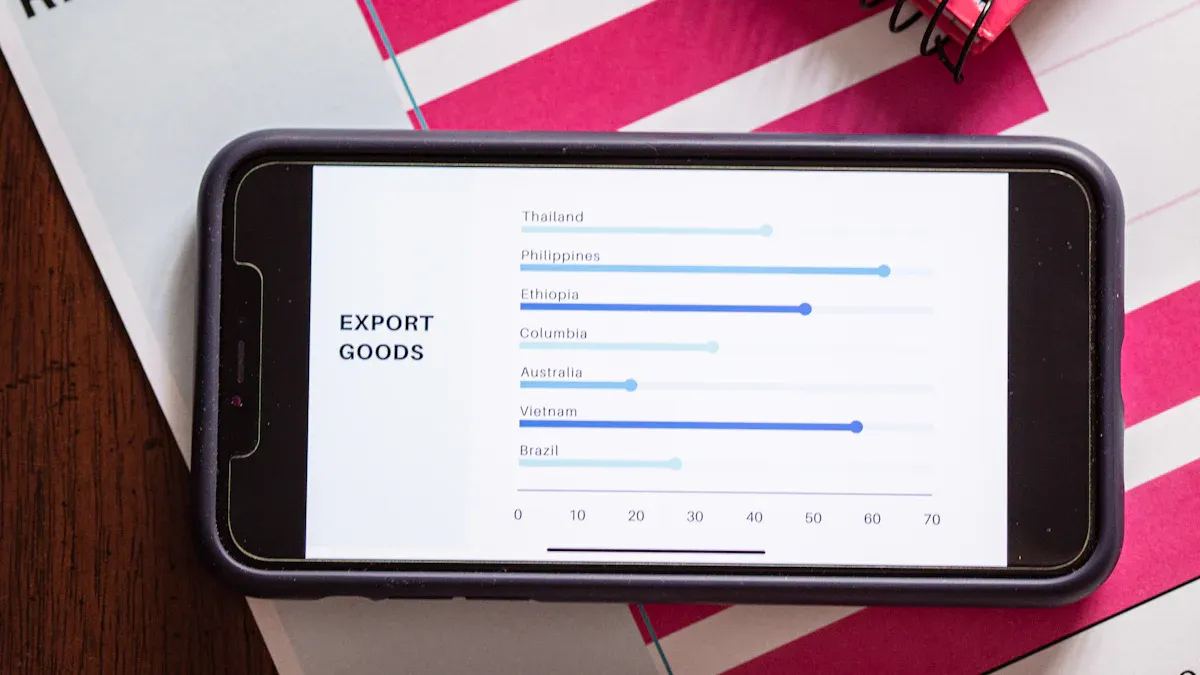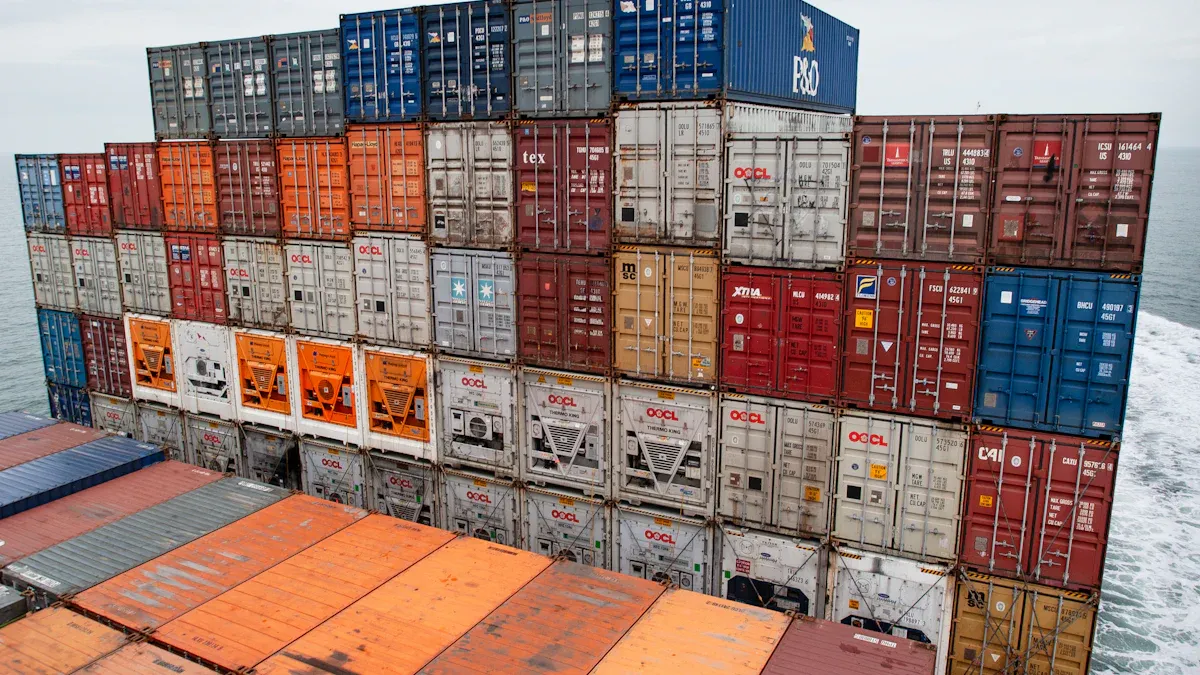
Accurate pricing plays a crucial role in export markets. It directly influences a company’s competitiveness and profitability. When businesses set their prices too high or too low, they risk losing market share or sacrificing profit margins. Several key factors shape pricing decisions, including market demand, production costs, and geopolitical conditions. To effectively price your titanium alloy parts, understanding these dynamics is essential.
Key Takeaways
- Understand supply and demand dynamics. Prices rise when demand exceeds supply. Stay informed about market trends to set competitive prices.
- Conduct thorough market research. Analyze competitor pricing and gather customer feedback to identify optimal price points for your products.
- Implement value-based pricing. Focus on the unique benefits of your titanium alloy parts to justify higher prices and enhance profitability.
- Consider production costs carefully. Account for material costs, labor, and manufacturing processes when determining your pricing strategy.
- Build strong relationships with buyers. Honest communication and flexibility can lead to better pricing agreements and long-term partnerships.
Understanding Titanium Pricing Dynamics

Understanding the dynamics of titanium pricing is essential for exporters. Current trends indicate that titanium prices are expected to rise gradually. Factors such as supply and demand dynamics, production costs, and the overall global economic environment contribute to this trend. As a result, businesses must stay informed about these fluctuations to remain competitive.
Several key elements influence the pricing of titanium alloy parts:
- Supply and Demand: The balance between supply and demand significantly impacts prices. When demand exceeds supply, prices tend to increase. Conversely, an oversupply can lead to price reductions.
- Production Costs: The cost of raw materials, labor, and manufacturing processes directly affects the final price of titanium alloy parts. For instance, fluctuations in titanium ore prices can lead to increased production costs, which may prompt manufacturers to adjust their pricing strategies.
- Geopolitical Influences: Political stability in titanium-producing regions can affect supply chains. Trade policies, tariffs, and international relations also play a crucial role in determining pricing.
The following table illustrates how fluctuations in titanium raw material prices can impact the final price of titanium alloy parts:
| Impact | Description |
|---|---|
| Increase in direct costs | The price of titanium ore directly affects production costs; higher prices lead to increased costs for titanium materials, potentially raising market prices. |
| Tight supply and price fluctuations | Limited availability of titanium ore can cause price increases, further raising production costs. For instance, in early 2024, rising prices in China’s titanium ore market led to increased production costs. |
| Corporate profitability | High titanium ore prices can compress profit margins for producers, prompting them to raise product prices to maintain profitability. |
By understanding these dynamics, exporters can make informed pricing decisions that align with market conditions and enhance their competitiveness.
Factors Influencing Costs
Supply and Demand
Supply and demand dynamics play a pivotal role in determining the pricing of titanium alloy parts. The current market shows that regional industrial activities, particularly in aerospace and defense, are driving demand in the Asia-Pacific region. Government investments in infrastructure and healthcare further boost titanium alloy usage. Technological advancements and recycling initiatives also influence supply dynamics, especially in Europe.
Several key sectors contribute to the demand for titanium alloys:
- The aerospace sector accounts for over 50% of the titanium alloy market, with significant investments in military aviation.
- The medical sector increasingly adopts titanium for implants due to its biocompatibility and strength.
- The chemical sector’s expansion in Asia raises the demand for corrosion-resistant materials like titanium alloys.
As the global Titanium Alloys Market was valued at USD 4.6 billion in 2023 and is expected to grow to USD 6.55 billion by 2032, the upward trend in demand is evident. Factors such as the modernization of aircraft in North America and the expansion of the elderly population contribute to this growth. Additionally, advancements in additive manufacturing technologies enhance production capabilities, further influencing pricing strategies.
Production Methods
The choice of production methods significantly impacts the cost structure of titanium alloy parts. Traditional methods, such as the Kroll process, are energy-intensive and time-consuming, leading to higher production costs. Innovations in extraction and refining techniques can lower these costs but require substantial investment in research and development.
Key factors affecting production costs include:
- Material Cost: Titanium is more expensive than metals like aluminum or steel.
- Material Hardness: High strength and hardness necessitate specialized tools, increasing costs.
- Tool Wear: The abrasive nature of titanium leads to faster tool wear and replacement costs.
- Low Machinability: Machining titanium requires careful cutting parameters, slowing down the process.
- Energy Consumption: The high melting point necessitates more energy during machining.
- Coolant Requirements: Extensive use of coolants adds to operational costs.
- Specialized Equipment: Robust CNC machines are needed, increasing initial investment.
- Post-Processing: Additional steps like heat treatment contribute to costs.
- Scrap and Waste: Increased likelihood of scrap during machining raises complexity and cost.
- Skilled Labor: Expertise in machining titanium comes at a premium.
In contrast, additive manufacturing reduces material waste significantly. Traditional forging methods can have a buy-to-fly ratio of 12:1 or higher, while additive manufacturing lowers this ratio to between 3:1 and 12:1. This reduction minimizes waste and lowers costs, making it an attractive option for manufacturers.
Geopolitical Influences
Geopolitical events can have profound effects on the titanium supply chain and pricing. Recent disruptions, such as Ukraine’s cessation of titanium sponge exports following the invasion, have led to significant supply concerns. Major companies like Boeing and Airbus have reduced reliance on Russian titanium due to sanctions, further complicating the supply landscape.
The ongoing conflict in Ukraine has caused global titanium prices to surge by approximately 90%. Supply concerns and increased demand for alternative sources contribute to this price increase. Disruption of logistics and transportation routes exacerbates the situation, leading to longer lead times for titanium supply, particularly affecting the aerospace industry.
Trade tariffs and export restrictions also influence the cost structure of titanium alloy parts. Increased costs from tariffs compel manufacturers to negotiate better terms with suppliers or absorb the costs into their pricing. U.S.-based manufacturers sourcing high-grade nickel alloy from Europe face unexpected cost surges due to tariffs, impacting their production costs. Companies in the aerospace sector must deal with increased costs and potential shortages as a result of shifting trade policies.
Strategies to Price Your Titanium Alloy Parts Competitively
Pricing titanium alloy parts competitively requires a strategic approach. Exporters must consider various pricing strategies to ensure they remain attractive in the global market. Here are three effective strategies to implement:
Market Research
Conducting thorough market research is essential for understanding the competitive landscape. Exporters should analyze pricing trends, customer preferences, and competitor offerings. This research helps identify the optimal price points for titanium alloy parts. Key steps in market research include:
- Identify Target Markets: Focus on regions with high demand for titanium alloys, such as aerospace, medical, and automotive sectors.
- Analyze Competitor Pricing: Evaluate how competitors price similar products. This analysis provides insights into market expectations and helps set competitive prices.
- Gather Customer Feedback: Engage with potential customers to understand their willingness to pay. Surveys and interviews can reveal valuable information about pricing perceptions.
By leveraging market research, exporters can make informed decisions that align with market conditions and customer expectations.
Value-Based Pricing
Value-based pricing focuses on the perceived value of titanium alloy parts to customers rather than solely on production costs. This strategy allows exporters to capture a premium price when their products offer unique benefits. Key components of value-based pricing include:
| Component | Description |
|---|---|
| Long-term supply contracts | Indexing contracts helps unify raw material costs across the supply chain, crucial for aerospace OEMs and suppliers. |
| Recovery value for specialty scrap | Standardized pricing for specialty alloys and intrinsic-value calculations for recycled materials are essential for manufacturers generating scrap. |
| Contract surcharges | Surcharges allow producers to adjust prices based on changes in raw material costs, ensuring they can pass on fluctuations to consumers. |
| Business planning | Understanding geopolitical impacts on supply and pricing is vital for businesses to maintain operations and manage risks associated with material availability. |
| Geopolitical factors | Regulations and tariffs can significantly influence the cost and availability of titanium products in the global market, affecting pricing strategies. |
By emphasizing the unique value of their products, exporters can justify higher prices and enhance profitability.
Cost-Plus Pricing
Cost-plus pricing involves calculating the total cost of production and adding a markup to determine the selling price. This method ensures that all costs are covered while providing a profit margin. Typical cost elements in cost-plus pricing for titanium alloy parts include:
| Cost Element | Price Range (per pound) |
|---|---|
| Commercially Pure Titanium | $6 to $10 |
| Aerospace-grade TiAl6V4 | $10 to $30 |
| Titanium Scrap | $2 to $4 |
Exporters should consider the following steps to determine the appropriate markup percentage:
- Gather Financial Data: Collect total sales and cost of goods sold (COGS).
- Set Your Markup Goal: Decide on a markup percentage that aligns with profit objectives, considering industry and market conditions.
- Calculate Selling Price: Use the formula to find the optimal selling price based on COGS and desired markup.
- Assess and Adjust: Review the calculated markup to ensure it meets profitability goals while remaining competitive.
This approach provides a straightforward method for pricing titanium alloy parts while accounting for production costs and desired profit margins.
Practical Tips for Exporters to Price Your Titanium Alloy Parts

Currency Fluctuations
Currency fluctuations can significantly impact the pricing of titanium alloy parts in export markets. Exporters should adopt strategies to mitigate risks associated with currency volatility. Here are some effective approaches:
- Cost-Based Dynamic Pricing: Adjust product prices in real time based on changes in raw material costs and labor expenses.
- Agile Contract Pricing: Ensure pricing can adapt based on predetermined conditions, such as raw material cost thresholds or exchange rate fluctuations.
- Data-Driven Pricing Decisions: Leverage historical pricing trends and predictive analytics to anticipate price fluctuations and adjust pricing models proactively.
By implementing these strategies, exporters can maintain competitive pricing while safeguarding their profit margins.
Regulatory Considerations
Regulatory requirements can influence the final price of titanium alloy parts. Exporters must stay informed about the following key regulations:
- Trade Agreements: These agreements set standards that prevent dumping and unfair subsidies, ensuring fair competition in the titanium market.
- U.S. Regulations: In the U.S., the Bureau of Industry and Security and the Directorate of Defense Trade Controls regulate titanium trade, focusing on national security and foreign policy.
Compliance with international standards, such as REACH, raises manufacturing costs due to expenses related to data collection and testing. Continuous compliance monitoring can also burden small and medium-sized enterprises, affecting their pricing strategies.
Building Relationships with Buyers
Strong relationships with buyers can lead to more favorable pricing agreements. Exporters should focus on the following aspects:
- Honesty and Transparency: Clear communication about sourcing and pricing helps buyers make informed decisions.
- Access to Expertise: Suppliers can provide valuable insights that may lead to cost savings and improved project outcomes.
- Flexibility in Orders: Strong relationships allow for adaptable order quantities and terms, which can lead to better pricing agreements.
Long-term partnerships enable better negotiation leverage, resulting in more favorable pricing outcomes. For instance, companies like Boeing have established long-term agreements with suppliers, securing stable supplies and better pricing.
In summary, exporters of titanium alloy parts should adopt several key pricing strategies to thrive in competitive markets. These include conducting thorough market research, implementing value-based pricing, and utilizing cost-plus pricing methods.
Continuous market analysis is vital for long-term success. It allows businesses to anticipate trends and adjust pricing accordingly. For instance, the titanium alloy market is projected to reach approximately USD 3.5 billion by 2028, with a compound annual growth rate (CAGR) of around 6% during 2023-2028. This growth underscores the need for exporters to remain vigilant.
Failing to adapt pricing strategies can expose companies to various risks, such as sudden price fluctuations due to geopolitical factors and supply-demand imbalances. Therefore, exporters must regularly review their pricing strategies by analyzing competitors and addressing customer needs. By staying proactive, they can maintain competitiveness and profitability in the evolving titanium alloy market.
FAQ
What factors should I consider when pricing titanium alloy parts?
Consider supply and demand dynamics, production costs, and geopolitical influences. Additionally, analyze competitor pricing and customer preferences to set competitive prices.
How can I mitigate risks from currency fluctuations?
Exporters can use cost-based dynamic pricing, agile contract pricing, and data-driven pricing decisions to adjust prices based on currency volatility and raw material costs.
What is value-based pricing?
Value-based pricing focuses on the perceived value of products to customers rather than solely on production costs. This strategy allows exporters to charge premium prices for unique benefits.
Why is market research important for pricing?
Market research helps exporters understand competitive pricing, customer preferences, and market trends. This information enables businesses to set optimal price points for their titanium alloy parts.
How do regulatory considerations affect pricing?
Regulatory requirements can increase manufacturing costs due to compliance expenses. Exporters must stay informed about trade agreements and regulations that impact pricing strategies in the titanium market.

